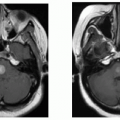TABLE 65.1 Radiation late effects | ||||||||||||||||||||||||||||||
|---|---|---|---|---|---|---|---|---|---|---|---|---|---|---|---|---|---|---|---|---|---|---|---|---|---|---|---|---|---|---|
| ||||||||||||||||||||||||||||||
radiation therapy, or removal of a kidney in the setting of other risk factors. Both glomerular and tubular injuries can be seen and many patients are asymptomatic (44,45,46,47,48,49).
TABLE 65.2 Chemotherapy late effects | |||||||||||||||||||||||||||||||||
|---|---|---|---|---|---|---|---|---|---|---|---|---|---|---|---|---|---|---|---|---|---|---|---|---|---|---|---|---|---|---|---|---|---|
| |||||||||||||||||||||||||||||||||
underway to help preserve function. This includes reduction in cumulative doses of radiation and chemotherapy as well as ovarian and sperm cryopreservation, which includes some yet experimental and evolving methodologies for women and prepubertal males (67,68).
TABLE 65.3 Common pediatric cancers and common first-line treatments | ||||||||||||||||||
|---|---|---|---|---|---|---|---|---|---|---|---|---|---|---|---|---|---|---|
|
with some studies among survivors reporting normal function, less risk taking, and post-traumatic growth while many others reporting increases in mental health disorders and symptoms such as stress, distress, anxiety, depression, posttraumatic stress disorder, impaired health-related quality of life (HRQOL), fatigue, and chronic pain (90,98,99,100,101,102,103,104,105,106,107,108,109,110,111,112,113,114,115).
Stay updated, free articles. Join our Telegram channel

Full access? Get Clinical Tree







